Boothstown’s Schools and Churches
This page contains information on Holy Family RC, Boothstown Methodist, St Andrew’s C of E and Ellenbrook Primary School. There is a separate page about the Church of St. Mary the Virgin, Ellenbrook (Ellenbrook Chapel).
Holy Family RC School and Church
Until the late 19th century, Boothstown had no Roman Catholic church or school. It was served by visiting priests from nearby areas who worked in rented cottages. Around 1894 a room was used in the west of Boothstown for Mass by a Fr. Grobel, and a house in the Orchard was sometimes used. A census showed some 200 Catholics in the neighbourhood. It was recommended that provision should be made for the Catholics in the village, and the matter was investigated by Dean Powell of Birchley in 1895. Stirrup Brook, which runs through the centre of the village, was the boundary between the Catholic dioceses of Liverpool and Salford, and it was decided that the area would be served from Liverpool because there were slightly more Catholics on the Liverpool side of the brook.
The site chosen was the estate of Oak Lea on Chaddock Lane, which was purchased by the Bishop of Liverpool. The house, which had already been used for Masses, is now the presbytery, and the name Oak Lea may still be seen on the gate posts. In 1911 Oak Lea was the home of a Mr Gendall (aged 53, an inspector of works) and his family.
The foundation stone of the school/chapel was laid by Bishop Whiteside on 17th August 1896, and the new establishment became part of the parish of Sacred Heart, Hindsford, with Fr. O’Neill the first priest-in-charge. The school was opened by Bishop Dobson on 2th May 1897. The principal, Miss Esther Collins, with one assistant, was responsible for 65 pupils. The picture below shows the original school/chapel buildings in the late 1990s before they were demolished.
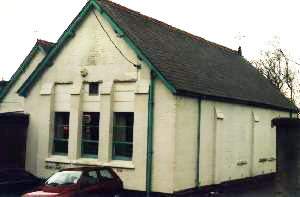
The Leigh Journal of 7 May 1897 recorded the opening of the school and chapel:
On Sunday (2nd May) the opening services were held in the handsome new school-chapel at Oak Lea, Chaddock Lane … The new school-chapel is admirably adapted to meet the wants of the Catholics of Boothstown, Mosley Common and Astley.
It has been planned for a mixed school, and consists of a school room 48 feet by 22 feet and, divided from it by sliding glass partitions, is a class room 27 feet by 18 feet, with porches and cloak rooms for boys, girls and infants, and the usual offices. As was the case on Sunday, a portion will be regularly used on Sundays and Holydays as a chapel, which will accomodate about 240 people.
There was a large attendance at High Mass on Sunday, the Bishop and the Rev. Father O’Neill conducting the service. The purchase of the house and the erection of the school-chapel had cost something like £2,000, and about half of that amount had been paid.
By 1899 there were 96 children at the school, and Miss Catherine Molohan replaced Miss Collins as head teacher, to be followed by Miss Jane Craig. In 1907 Miss Ellen Green (later Mrs. Simpson) began her term as head teacher, which was to last 41 years. In all, the school had only had seven head teachers in 100 years:
- 1897-1899 Miss Esther Collins
- 1899-1901 Miss Catherine Molohan
- 1901-1907 Miss Jane Craig
- 1907-1948 Miss Ellen Green (later Mrs. Simpson)
- 1948-1957 Mr. Francis Fishwick
- 1957-1986 Mr. Kevin Fleming
- 1986-[end date?] Mr. Kevin T. Lawman
As the area developed, a new church to accomodate 400 people was commissioned by Canon Whiteside of Hindsford at a cost of £6,500. Designed by the architect Mr. H. Greenhalgh of Bolton, the foundation stone was laid on 29th June 1929. The first Mass was celebrated at midnight, Christmas 1929, in the unfinished building. The formal opening was performed on 9th March 1930 by Archbishop Downey, and the Holy Family parish was established in January 1931, with Fr. John Blake the first parish priest. By this time the school was becoming crowded with 119 pupils. The modern church is pictured below.
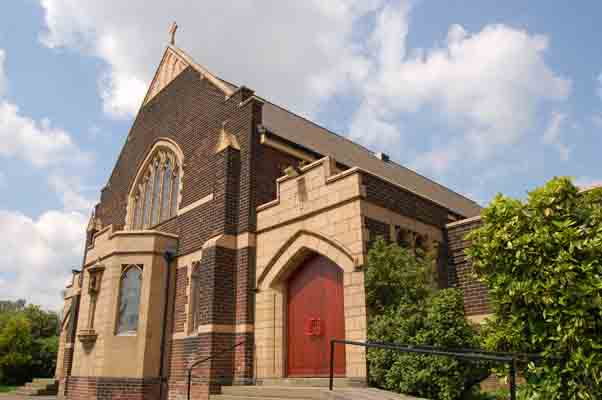
Fr. Blake was succeeded in 1938 by Fr. John Gore, who was in turn succeeded by Fr. Thomas Byrne in 1948. Fr. Byrne was parish priest until 1972 and oversaw considerable changes. An outlying chapel was established at St. Ambrose’s, Astley in 1951, which became a separate parish church in 1965. On Sale Lane, Tyldesley, St. Kevin’s chapel was established in 1967, though this closed in the late 1980s. Fr. James Beirne became parish priest in 1972. Fr. David Heywood succeeded Fr. Kevin Snape in 1996. The present parish priest is Fr Paul Grady.
The original school/chapel buildings, alongside the church on Chaddock Lane, became the parish social club until the building was demolished in August 2003. The two photos below were taken just a few weeks before Boothstown lost this particular piece of its history. By chance, the original Methodist school buildings were demolished in the same week!
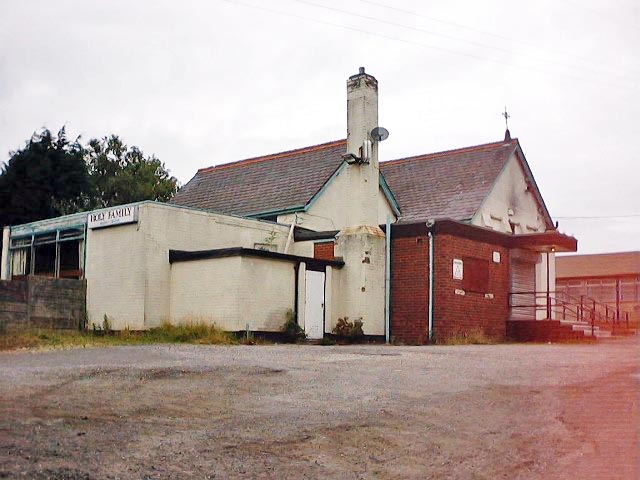
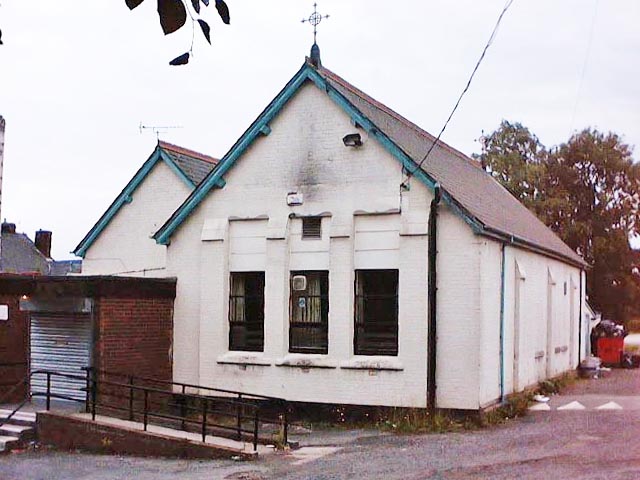
The first phase of the modern school, behind the old building, was opened in 1954 for infants; the junior classrooms and offices ‘completed’ the school in 1963. Since then, the growth of the parish has led to several further extensions, most recently in 1992, when there were 238 pupils on the roll. The picture below shows part of the modern school buildings.
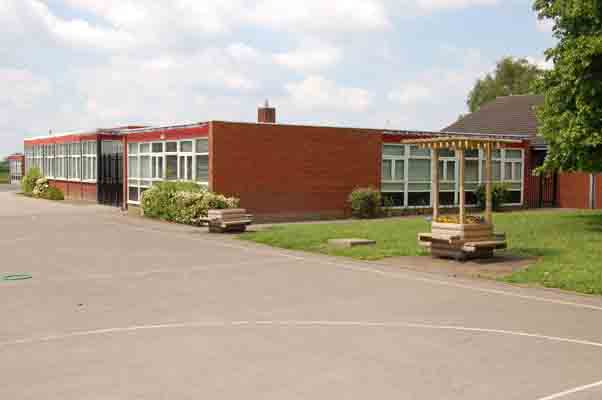
Boothstown Methodist School and Church
The pictures below show Boothstown Methodist Church in the early 20th century and in the 1990s. Remarkably little had changed, although the cobbles, tramlines and pavements had been resurfaced. On the old picture, notice the posts supporting the tram wires. All the buildings are the same, but the turret on the church had disappeared.
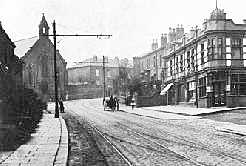
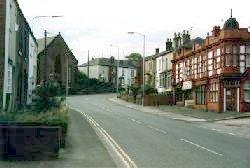
A Methodist society, chapel and Sunday school had been established at New Manchester, near Mosley Common, north of Boothstown in the 1820s, following the ‘missionary’ work of David Delamere. The Methodists established a presence at New Manchester, renting a cottage from Fanny Worthington. In the 1838 valuation it was listed as Ranters’ Chapel. Evidence suggests there was no day tenant, and that the cottage was used only for worship. The New Manchester chapel, now closed, dates from 1868, and in 1907 a centenary memorial new Sunday school was built.
(For information on the Primitive Methodist chapel at New Manchester, see the New Manchester and Mosley Common page of this Web site.)
Boothstown had a committed Weslyan community from the 1830s. A new Methodist Sunday school was established in Boothstown in 1849, and in 1853 a Methodist chapel opened in the village. The chapel quickly became too small for the growing congregation. The stone above the doorway of the chapel in the above photographs had the inscription Weslyan Chapel 1872; it opened in 1873, and was licensed to perform marriages in 1885.
The first baptisms recorded, of Hannah Young, Peter Edge and Hannah Edge, were on 21st November 1844, and pre-date the chapel. It is not known where they were performed.
The first marriage was of George Barnes and Martha Harriet Smith, on 4th February 1886; the service was performed by Rev. T.W. Johnstone and Rev. J.J. Smith.
The Methodist day school in Boothstown was opened in 1884 and included the 1853 chapel. The first head teacher, Mr. George Beddow, continued for 18 years.
In 1909, for the Diamond Jubilee of the Weslyan Sunday School, William Morris Edge wrote the poem Lines, which began:
‘Twas on the eleventh day of February 1849,
That six Christian men began a work quite Divine,
They opened a School, to teach children the way,
From this world of sin to the realm of bright day.
The six were Peter Edge, Matthew Kniveton, Arnold Unsworth, John Young, Henry Booth and Benjamin Cleworth.
When George Beddow left in 1902, his replacement, William Haughton, died 6 weeks later. Elijah Spencer taught from 1902 until 1926, when William Garnett succeeded. From 1936 until his death in 1952, H. Hegarty was head teacher.
In 1916, the turret on the front of the chapel was blown off and smashed on the steps and iron gates below (see photographs above).
Recollections from the centenaries of the Sunday school (1949) and chapel (1972) refer to early Sunday school meetings occuring in a room behind the Royal Oak pub; of community meetings in a cottage at Engine Row (by the Chaddock colliery); and of services in a farmhouse on Vicar’s Hall Lane.
New school buildings were opened in 1973 and were extended in 1976. In 1978, the chapel interior was altered to accomodate community activities. By 1990 the day school had had eleven head teachers.
In August 2003 the original school building was demolished. The photos below were taken when demolition was in progress. By chance, the demolition of the school building happened in the same week as the demolition of the original school/chapel of Holy Family RC.
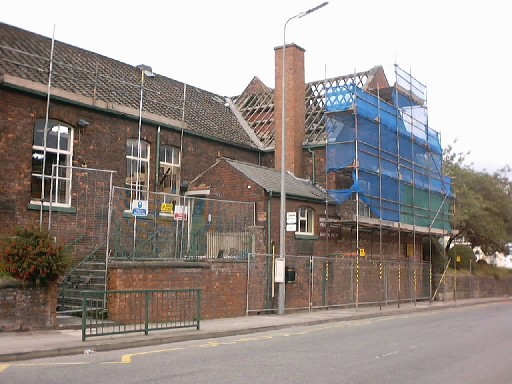
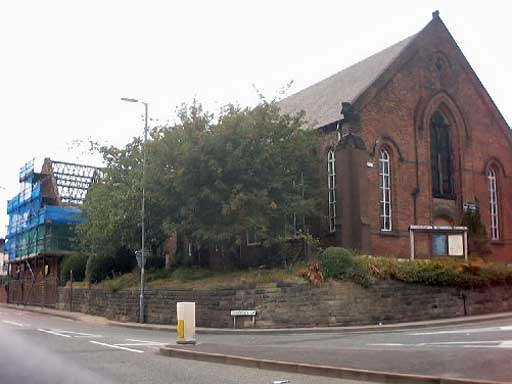
The historic chapel was demolished in 2007:
The new church was constructed in 2007:
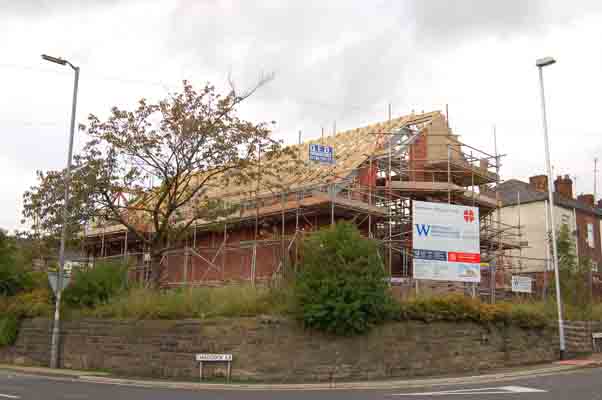
St. Andrew’s Church of England Primary School
St. Andrew’s school was founded as the Boothstown Church School and opened in August 1874. The school was built by Mr. Summerfield of Tyldesley at a cost of five hundred pounds, paid by the 3rd Earl of Ellesmere, and was established by a board of local dignitaries under the auspices of the Church of England. The building was also used as a Sunday school and for church services. It was the first of a number of local schools to be financed under the Education Act of 1870. The Act was the first to provide public money to local boards for the foundation of schools. Although the parish of Worsley was responsible for the school’s maintenance, government grants were available for books and other materials. The school logbook for 1886 records that the school received seven shillings and tuppence for each pupil’s yearly costs. The first set of governors (called managers) included the Earl and Countess of Ellesmere, and the Earl of Mulgrave, who was Vicar of St. Mark’s, Worsley. The Countess was a regular visitor.
The school had 120 pupils when it opened. The original building is pictured below. The Victorian school day began at 7.30 am for the teachers, who received specimen lessons from the head teacher to ensure consistency in teaching. The children began at 8.30 am and would spend most of the day undertaking repetitive activity in silence.
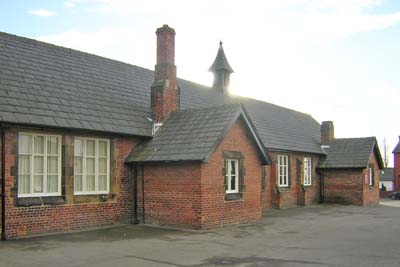
The children were aged from 4 to 14 years, and were placed in ‘standards’, depending on their abilities. They learned to read, write, calculate and recite, but also learned practical skills such as needlework, embroidery, woodwork and smithying, often in the small outer-buildings by the old school. The school enjoyed a good local reputation and frequently won a district merit shield. The school was rewarded with extra funds when pupils moved into higher standards following annual examinations.
In 1896 Robert Turner became head-teacher and held the post until 1921. The school remained unchanged during this period, by the end of which the original buildings accommodated 180 pupils who were still taught in standards. Children still remained at the school until 14 years old, though older pupils were often allowed to leave school early to bring in the harvest. Some children transferred to secondary schools in Walkden and Eccles on leaving the school.
In 1933, Boothstown Church School became an infant and junior school, and pupils aged over 11 were transferred to Walkden Senior School. The 1944 Education Act changed teaching methods and broadened the curriculum; in Boothstown the old school buildings held over 200 children. The school was part of the Lancashire Education Authority, Division 18.
By the 1970s the school served over 290 children, and new buildings were constructed. Several phases of building were completed in 1981 with the opening of the nursery.
In 1986 the school changed its name to St. Andrew’s. The original buildings were used for junior children until very recently when they became the Boothstown Village Hall.
The Church Institute was built opposite the school in 1927 as a community building; it was replaced by the new Boothstown Community Centre in 1977 and demolished in the late 1980s. But the old school hall is still used for many community activities, including a playschool, and meetings of scouts and guides.
Ellenbrook Primary School
The new primary school at Ellenbrook opened in September 1996. It was established on a green-field site to meet the needs of a growing local population, following the massive house-building programme of the 1980s and 1990s.
Acknowledgements
Holy Family history was drawn from material produced to celebrate the 50th anniversary of the parish church in 1980 (kindly supplied by Fr. Heywood), the Dedication and Blessing of the school by the Archbishop of Liverpool in 1992, and the school centenary in 1997. Much of the material on the Methodist community was researched by local historian, the late Ken Fairfax, and supplied by Carol Woodward. Information on St. Andrew’s school was kindly supplied by the school, with additional notes on its foundation taken from Changing Scene: 200 Years of Church and Parish Life in Worsley by H.T. Milliken. Colour photographs by Tony Smith. Black and white photographs were kindly supplied by Walkden Library. This web page was compiled by Tony Smith.